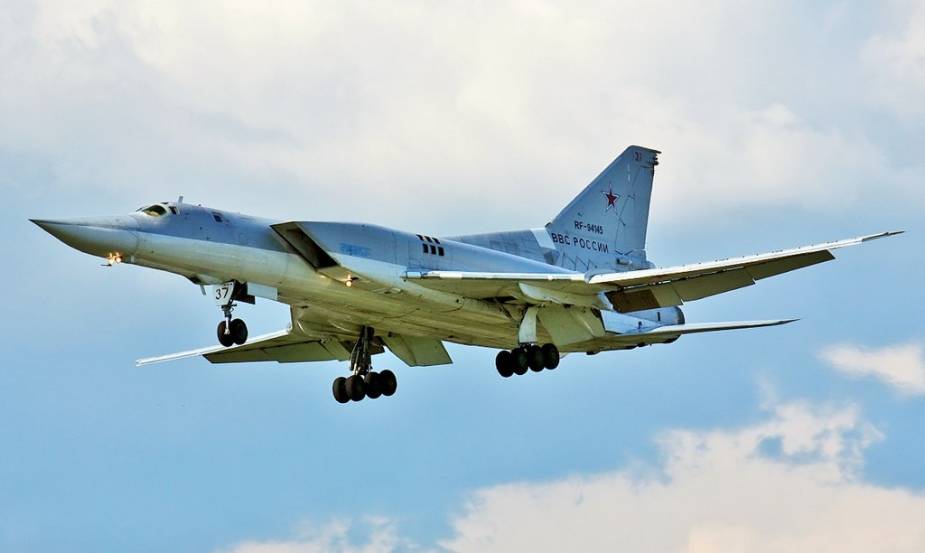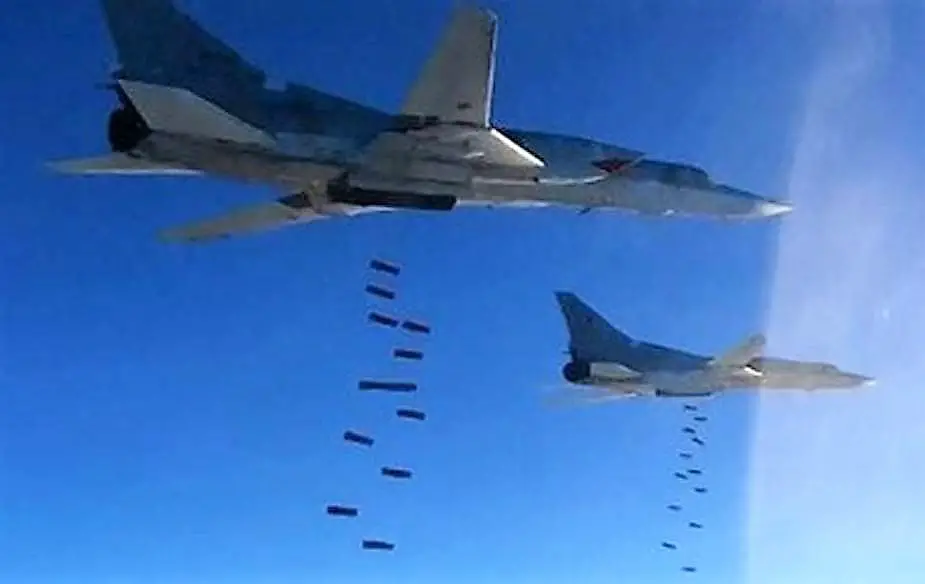Breaking news
Russian Tu-22M3 Backfire-C bombers strike Mariupol.
According to Ukrinform, for the first time since the beginning of the Russian invasion of Ukraine, the Russian armed forces attacked the Ukrainian port city of Mariupol using long-range Tupolev Tu-22M3 bombers to drop unguided bombs, Ukrainian Defense Ministry spokesman Oleksandr Motuzianyk said on April 15.
Follow Air Recognition on Google News at this link
 Tupolev Tu-22M3 Backfire-C (Picture source: Wikipedia)
Tupolev Tu-22M3 Backfire-C (Picture source: Wikipedia)
According to Ukrainian Defense Ministry spokesman Oleksandr Motuzianyk, Russian invaders continue to concentrate their efforts on the offensive in eastern Ukraine, establishing control over the Donetsk and Luhansk regions and creating the so-called land corridor with the territory of the temporarily occupied Crimea.
The 120-ton Tupolev Tu-22M (NATO reporting name: Backfire) is a supersonic, variable-sweep wing, long-range strategic and maritime strike bomber developed by the Tupolev Design Bureau in the 1960s. According to some sources, the bomber was believed to be designated Tu-26 at one time. During the Cold War, the Tu-22M was operated by the Soviet Air Forces (VVS) in a missile carrier strategic bombing role, and by the Soviet Naval Aviation (Aviatsiya Voyenno-Morskogo Flota, AVMF) in a long-range maritime anti-shipping role. Significant numbers remain in service with the Russian Air Force, and as of 2014 more than 100 Tu-22Ms were in use.
An initial attempt at modernizing the Tu-22M, Adaptation-45.03M, based around modernizing the aircraft's radar, began in 1990 but was abandoned before reaching production. In 2007, work began on a new radar for the Tu-22M, the NV-45, which was first flown on a Tu-22M in 2008, with four more repaired Tu-22Ms refitted with NV-45 radars in 2014–2015.
A contract for a full mid-life upgrade, the Tu-22M3M was signed in September 2014. The aircraft is to receive a further modified NV-45M radar, together with new navigation equipment and a modified flight control system. A new self-defense electronic radar suite is fitted, replacing the tail gun of the existing Tu-22M3. Much of the new avionics are shared with the upgraded Tu-160M2. Armament is planned to be enhanced by adding the new Kh-32 missile, a heavily modified version of the current Kh-22, the subsonic Kh-SD, the hypersonic Kh-MT, or the Kh-47M2 Kinzhal missiles. Deliveries of the Tu-22M3M were expected to begin in 2021.
A separate, simpler, upgrade program (SVP-24-22) is being carried out by the company Gefest & T, based on avionics developed for the Sukhoi Su-24 attack aircraft, including a new computer, a new navigation system and digital processing for the aircraft's radar. The upgrade is claimed to greatly increase navigation accuracy and bomb delivery. An SVP-24-22-equipped Tu-22M underwent trials in 2009, and the program had been ordered into production, with deliveries from 2012.
 Tupolev Tu-22M dropping unguided bombs on a Syrian target (Picture source: Russian MoD)
Tupolev Tu-22M dropping unguided bombs on a Syrian target (Picture source: Russian MoD)
Tupolev Tu-22M3 Backfire-C
The later Tu-22M3 (NATO: Backfire-C), which first flew in 1977, was introduced into operation in 1983 and officially entered service in 1989. It had new NK-25 engines with substantially more power, wedge-shaped intake ramps similar to the MiG-25, wings with greater maximum sweep and a recontoured nose housing a new Almaz PNA (Planeta Nositel, izdeliye 030A) navigation/attack (NATO ‘Down Beat’) radar and NK-45 nav/attack system, which provides much-improved low-altitude flight. The aerodynamic changes increased its top speed to Mach 2.05 and its range by one-third compared to the Tu-22M2. It has a revised tail turret with a single cannon, and provision for an internal rotary launcher for the Raduga Kh-15 missile, similar to the American AGM-69 SRAM. It was nicknamed Troika ('Trio' or third) in Russian service. 268 were built until 1993.
As built, the Tu-22M included the provision for a retractable probe in the upper part of the nose for aerial refueling. The probe was reportedly removed as a result of the SALT negotiations because with refueling it was considered an intercontinental-range strategic bomber. The probe can be reinstated if needed.
Tu-22M3s used to attack targets in Syria underwent modernization, during which the SVP-24-22 specialized computing subsystems were installed on them, significantly increasing the accuracy of the bombing.
No additional details are available so far concerning the Tu-22M3s used to bomb Mariupol and other targets in Ukraine.

























